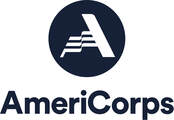Maintenance Deferred: Adjusting Plans for a Historic Preservation Project during a Pandemic10/19/2020
Within the New River Gorge National River, the National Park Service is responsible for maintaining a staggering number of assets and resources. This list includes 27 administrative buildings, 9 campgrounds, 11 public restrooms and 16 vault toilets, 5 staff housing units, 2 year-round and two seasonal visitor contact stations, 131 miles of trail, and 35 miles of roads. It requires a huge amount of labor, money, and time to maintain the assets listed above, and much of the park’s maintenance staff and budget are devoted to that purpose. Not listed above, but certainly worth attention, are the three historic farmhouses that the NPS owns on River Road near Hinton. For my civic service project, I planned a project to stabilize one building at one of these three historic farms. The plan was to install water bars and a French drain around a spring house to prevent the continued accumulation of sediment on and around the building. Carpentry repairs would also be made to the buildings walls and door, which had rotted from prolonged exposure to sediment and water. This work, like a lot of small but important tasks at the park’s lesser-known historic sites, would go a long way towards preserving the building. Unfortunately, the COVID-19 pandemic postponed the project, and I was left wondering if it could be completed at all. In mid-summer, the project was revisited and re-imagined. It was deemed unsafe to work with volunteers, but the park’s maintenance staff and an AmeriCorps crew from the Appalachian Conservation Corps were available for the task. With these resources we were able to expand the scope our project to include not only one building at one farm, but the entirety of all three farms on River Road. On the day of the project, we had over 30 people working on different tasks between the three farms. Downed trees were cleared, grass was mowed, gutters were cleaned, ivy was removed from the outside of buildings and debris was cleaned from their insides. The stabilization work at the spring house also went off as planned. These tasks, though small, are often lost in the shuffle of the park’s busy day-to day maintenance operations. The day also provided the park’s maintenance staff a chance to safely work together on a common project in a year where large gatherings of people could not be held. Some people involved in the project had never been to the farm where they were working, and I really liked how this work day allowed them a chance to learn about and appreciate another site in the place where they work. Though my civic service project did not go the way of my original plan, I was very pleased with how it turned out. In a year where so many things had to be cancelled or set aside, it felt good to work with the staff at the park to adapt to challenging circumstances and develop a plan to safely carry out an effective project to care for some important, though sometimes overlooked, historic resources. Will WheartyWill was the Preserve WV AmeriCorps member for the New River Gorge National River's Maintenance Division during the 2019-2020 program year. As a retired history professor and academic, I had numerous opportunities to work with primary source collections, and handled many rare and unusual documents in my research work. Over time, I became very interested in the processes behind the acquisition and care of rare books and special collections, so much so that I took early retirement as a professor and pursued a Master’s of Library and Information Science with a specialization in that area. I received the degree in August, 2016, and completed an internship at Cleveland State University that same year. I saw an opportunity to serve as an AmeriCorps member in the West Virginia & Regional History Center (WV&RHC) at West Virginia University (WVU), applied for it, and was accepted into the program. I began the appointment at the end of August, 2019. My major project at the Center was to work with the Dr. Emory Kemp Collection. Dr. Kemp, a noted engineer, architect and historian, was a member of the WVU History Department until his retirement. In 2016, he donated many items from his working life to the WV&RHC, including all of those related to the Institute for the History of Technology and Industrial Archaelogy (IHTIA), which he founded and ran for a number of years. In addition, a series of oral interviews with Dr. Kemp that were conducted by Dr. Barb Howe, also an emerita professor of history at WVU, formed part of the collection. In the fall of 2019, my primary objective was to complete the transcriptions from the oral histories, and to review the transcriptions previously done for any needed corrections/additions/deletions. Part of this work involved selecting a new transcription software program to be used in processing the transcriptions. Supervised by Jane LaBarbara, Assistant Curator, this project was finished by early 2020. On December 19, 2019, Paula Martinelli, Director of Development for the WVU Libraries, arranged for me to meet Dr. Kemp and his wife, Janet, at their home. While Dr. Kemp was not in good health (he would pass away on January 20, 2020), we were able to have a nice conversation about his life’s work, and I was very happy to have had an opportunity to meet him. Upon the completion of the transcriptions in early 2020, I began helping with the physical part of the collection: documents and maps that were part of the IHTIA archive. For the documents, I inspected and conserved them, labeled and listed them in a detailed Excel spreadsheet, and then transferred them into new archival boxes in anticipation of re-storage. The IHTIA maps, which were created from the early 20th century forward, were of varying sizes, both in length and depth. Many of them were also in a fragile condition, and in need of repair. As an intern curator (again under the direction of Ms. LaBarbara), I checked their condition, described them for use as a finding aid on the library website, labeled them for cataloging, and rehoused them into new archival boxes in anticipation of re-storage. Unfortunately, the closure of the library due to the pandemic stopped the progress of this project, but I am hoping to get back to work on this again during the next program year. Connie EvansDr. Connie Evans served as the Preserve WV AmeriCorps member at the West Virginia & Regional History Center at West Virginia University during the 2019-2020 and 2020-2021 program years. Prior to March of 2020, I was looking forward to seeing events I had planned for my spring service with Adaland Mansion and Barbour County Historical Museum come to fruition. Adaland would have hosted yoga on the outdoor pavilion and benefited from a spring cleanup event. Community volunteers with the Barbour County Historical Museum were planning on repainting a portion of the Philippi B&O Depot. The COVID-19 pandemic put these plans on pause, bringing more immediate community needs to light. I resolved to help with the West Virginia (Medical) Mask Army, a pop-up nonprofit organization addressing the personal protective equipment shortage by sewing filter masks. After establishing that Philippi had a volunteer base ready to sew medical masks, I put together a group order for mask supplies and contacted the Mask Army. The nearest supply hub at the time was in Charleston, so I made the drive to pick up mask-making supplies and began contact-less distribution to volunteers in Philippi. The Philippi hub was officially started on April 1. I assemble kits, arrange drop-offs, and track masks and distribution from one of my AmeriCorps sites – the Barbour County Historical Museum. As of mid-May our hub has grown to include 37 dedicated volunteers who have produced over 1700 medical masks! Masks have been distributed to essential workers in hospitals, nursing homes, senior centers, homeless shelters, and more. Most recently, the Philippi hub gave 500 masks to the Stonewall Jackson Memorial Hospital in Weston and 45 masks to City of Philippi essential workers. Despite the need to physically distance during the COVID-19 pandemic, the community has found a way to come together to help. Virginia SHimekVirginia served with the Barbour County Historical Museum and Adaland Mansion during the 2019-2020 service year. Duffields Depot, located in Jefferson County, West Virginia is considered to be the second oldest surviving combined freight and passenger train depot in the nation. The two and a half story stone building, with a now destroyed wooden warehouse attached, was built by Richard Duffield between 1839 and 1842 with the $2,500 he received from the Baltimore and Ohio Railroad for right of way access to his land. During my AmeriCorps service year, my main project was researching the property for as much information as possible. This research resulted in a new brochure, several grant applications, and an extended research report. We have also executed several work days at the property, including clearing brush, replacing windows, and evaluating and removing rotted floorboards. The Jefferson County Historic Landmarks Commission has a goal of rehabilitating and reopening the depot to the public, as it has been in a consistent state of decline over the last few decades. The research report and interpretive material helps to inform the public about the space, connect it to their local history, and place the structure in its context, while the grants provide the fiscal support needed to stabilize Duffields Depot. Other groups in the region have also expressed their interest and support for the project, such as the Civil War Trails, the Shenandoah Valley Battlefields Foundation, local historical societies, and several individuals. The goal for the property is to have it stabilized, restored, and opened to the public as a learning space and site specific museum. Duffields Depot encapsulates several areas of Jefferson County and West Virginia history, such as the impact of the railroads in the 19th century, rural county farm products, the creation and success of villages, and the role of local personalities in the development of an area, appalling to many different interest areas. McKenzie HitchcockMcKenzie served as the Preserve WV AmeriCorps member with the Jefferson County Historic Landmarks Commission during the 2019-2020 service year. For the past twenty years, the Martinsburg Roundhouse has been under renovation. This has included the installation of new roofing and windows, a fire suppressant system, and the construction of bathrooms. There are many projects in development with the aim of improvement and preservation yet the goal remains clear: a rebirth of the Martinsburg Roundhouse, for it to serve a new role in the community. This place once so vital for the city, for the Baltimore and Ohio Railroad Company, and the state of West Virginia has been reduced to a mysterious structure for Martinsburg citizens. Many people have largely ignored the roundhouse since it was shut down in May of 1987, a situation exacerbated by the onset of the COVID-19 pandemic. Multitudes of the festivals and shows have been canceled, and only a small number of visitors have gone on tours throughout this summer. During my service at the Martinsburg Roundhouse, I wanted to strategize a way to share the history and significance of the Martinsburg Roundhouse with a broader audience, but I especially wanted to show local people why this site mattered. The best way I thought that this story could be spread was through the schools in Berkeley County. The West Virginia history curriculum requires state and local history lessons, primarily in grades four and eight. The history of the Martinsburg Roundhouse is relevant to several historical topics: industrialization, the Civil War, and labor history in West Virginia. Yet the project has evolved from simply being a virtual tour of the site. I have had the opportunity to collaborate with a great videographer, Ronald, on this project. Ronald has helped me develop the project beyond my original idea into a more expansive one: a full-length documentary of the site. A crucial part of the documentary project has been oral history interviews. Interviewees for the video have been local historians, past employees of the roundhouse, and their family members. These interviews have illuminated and captured the history of the site, as well as serve to demonstrate the site’s importance to individuals and the community. Two key questions that have helped me to understand the feelings people have for the Martinsburg Roundhouse and why they are invested in the landmark’s future. One of the questions we’ve been asking when talking with past employees is “What did you enjoy about working at the Roundhouse?” For Chief Clerk Jim Rickard and laborer Donnie Castleman, the answer was the same: the people. This answer shows that these men had, and still have, a sense of comradery and that they are proud of the work that they did at the Martinsburg Roundhouse. The other key question that we’ve been asking all interviewees and the question we usually end the interview with is, “What the roundhouse means to you?” The employees of the Martinsburg Roundhouse and family members of employees had a similar answer to the question, that to them the roundhouse meant their livelihood. This answer reveals an essential element of what makes the roundhouse special, that this place and this industry-supported Martinsburg. I think these answers would be surprising for those who view the Roundhouse as merely a collection of vast and empty buildings. Yet for the people who worked there and their families of those who worked there it meant putting food on the table and paying the bills. It meant spending time with and growing to know people who were dedicated to the job. All interviewees have a singular vision of what they want for the site that means so much to them: that it has to be revitalized and needs to become central to the community again. How the roundhouse fulfills that role and place once again is still in question yet the ideas include the building of an amphitheater, a venue space, and the addition of a formal museum space. Each of these ideas seek to honor the history of the Martinsburg Roundhouse while simultaneously meeting the needs of Martinsburg. The documentary is still in production. The oral history interviews will conclude on September 22 and we will begin the editing phase of this project. It will take an estimated eight months for the footage to be edited and for the film to be completed. In addition to the documentary, the virtual tour is still being made. We will be utilizing the same footage, yet the narration will be tailored toward kids. There will be worksheets provided for grades kindergarten to twelfth grade along with the tour. As it stands the intention is to sell the documentary in the Martinsburg Roundhouse gift shop, as well as to play sections of it at the beginning of tours and Roundhouse events. Yet I ultimately hope that it uncovers for the people of Martinsburg and students across Berkeley County the magic of the Martinsburg Roundhouse Claire TryonClaire served as the Preserve WV AmeriCorps Member for the Martinsburg Roundhouse during the 2019-2020 program year. 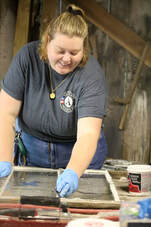 On July the 24th, 2020, a group of Preserve WV AmeriCorps members and local contractors met at Old Hemlock Foundation located in Preston County to participate in a historic wooden window restoration workshop with Smiths Family Workshop. Guided by the professional preservationists Jon and Derrick Smith, those in attendance worked on the windows from the house located on the Old Hemlock Foundation property that dates back to the early 1800s. Those in attendance learned how to safely remove the paint and glaze from the windows, how to fit new glass windows panes into the frames, and then how to glaze the panes back into the window. The benefits of work like this for Old Hemlock Foundation and other such historic sites are the increased energy efficiency, and windows can become more secure in the process. In addition to these things, particularly damaged windows can be made like new again, saving money and beautifying the building. The skills learned at the workshop are something I personally will take with me into future projects, as historic preservation is something I am passionate about and would love to pursue a job in. I think this is something that can also be said about the other attendants. As such this workshop was invaluable to those in attendance and also to Old Hemlock. Jamie BillmanJamie Billman served as the Preserve WV AmeriCorps member at the Old Hemlock Foundation during the 2019-2020 program year. Built in 1908, Matewan’s jail is one of the town’s oldest and most historic structures. It’s the very building where Smilin’ Sid Hatfield, the town’s Chief of Police during the Battle of Matewan and the miners' hero, called his work quarters. During my AmeriCorps service, I had the pleasure of planning my Civic Service Project around the restoration of this wonderful and historic resource in the town of Matewan. Community volunteers gathered inside the jail on Martin Luther King Jr. Day in January and spruced up the inside with a fresh coat of paint. This was merely a stepping stone in the building’s rehabilitation. In fact, the Old Jail has undergone major facelifts and improvements in recent years: new windows, an outside paint job, a new HVAC system, jail cells, and so much more. And it’s thanks to a special and dedicated group of volunteers working in Matewan the past 7 years. The project has been locally driven by community members, and the United Methodist Church owns the historic property. This building is part of a heritage-destination vision that community members drew up in 2015 during the Turn This Town Around Initiative, sparked by the WV Community Development Hub. With years of dedication, work, and perseverance, their vision has blossomed into a reality. Now, the Old Jail is a wonderful addition to Matewan’s many heritage stops and attractions. The restoration group aimed to have it’s grand reopening as part of the heritage activities offered on the weekend of May 16--the 100 year observation of the Battle of Matewan. Plans were postponed due to the pandemic. The group hopes to have the opening of the jail once the pandemic is behind us. Kenzie NewKenzie New served as the Preserve WV AmeriCorps member assigned to the Matewan Train Depot Replica & Visitor's Center for the 2019-2020 service year. 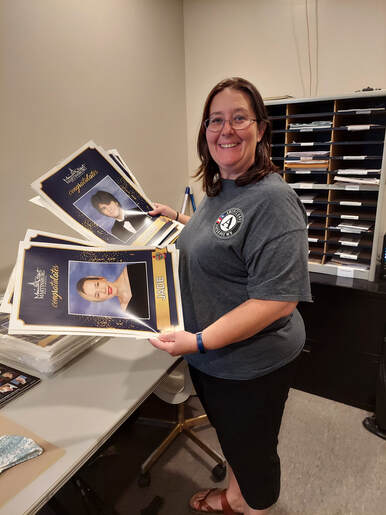 The 2019 – 2020 service year for Main Street Martinsburg was going to be a great eventful year full of different activities and events scheduled throughout the whole year. September through January had mixers at different businesses. November and December were full of Christmas events, such as the Christmas Tree lighting and the Christmas Parade. January kicked off the year with a partnership with Healthy Berkeley for Frosty Family Fun Day. February was a planning month where Main Street Martinsburg was gearing up for the main events of the year to include the Chocolate and Book Festival, a wine festival, Fridays @ Five, and we planned to end the AmeriCorps service year with a large event called Boots & Brews. In March, Main Street Martinsburg came to a screeching stop due to COVID-19. Like so many in the world, Main Street Martinsburg had to alter how to help the community. At this time I began to work with executive director, Randy Lewis, to keep the community informed with the daily changes in both the community and with the many different businesses in the Martinsburg Community. Randy and I both started working from home and kept in touch through emails and text. Randy would send me information to post on the website in order to help the community stayed informed, and I would then post on the Main Street Martinsburg’s website. The postings would include information that residents could use, almost daily updates from the state, and other guidelines that the community needed since they changed so often. I also at that time switched the weekly blog of events that were occurring around town to online events that many non-profits were doing to help people while they were staying at home. These included virtual exercise classes, virtual music shows for all ages, virtually connecting with the library, and updates on any of the other non-profits in the community that were available. In May, Main Street Martinsburg decided to help celebrate all of Berkeley County’s High School Senior Graduates. Main Street Martinsburg celebrated the seniors by partnering with some of the local businesses and the Berkeley County Board of Education and had picture posters made and hung them in all the local businesses on Queen Street. These pictures hung until the end of June. Even though during this time I was not able to work with the many volunteers that Main Street Martinsburg has in person, I was at least able to help Randy Lewis with keeping the website updated and help with the senior posters. This allowed me to share with the community an extension of what Main Street Martinsburg was doing to help the community and with the community to stay in touch with both Main Street Martinsburg and Downtown Martinsburg. Even though many of the great events planned did not occur due to COVID-19, these small gestures, I hoped, helped some in the community. SUSAN CrowellSusan Crowell served with Preserve WV AmeriCorps during the 2019-2020 program year where she was assigned to assist the Berkeley County Historical Society and Main Street Martinsburg. 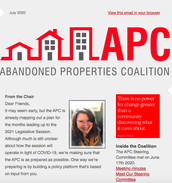 During the two years I’ve been a Preserve WV AmeriCorps member serving at the WVU BAD Buildings Program, I have been extensively involved with the work of the Abandoned Properties Coalition (https://badbuildings.wvu.edu/abandoned-properties-coalition). The APC is made up of stakeholders, partners, representatives from key organizations, and topic area experts (Including PAWV and the BAD Buildings Program) that are committed to working with communities to adequately address the issue of vacant, abandoned, and dilapidated properties across West Virginia. At the start of my service, the APC was just beginning the transition period from being headed by the WV Community Development Hub to the BAD Buildings Program. Thanks to my position, not only was I able to see the APC grow and develop, I took an active role in that progress. My original task for the APC was the maintenance and growth of the Abandoned Schools Inventory. One of the issues the APC is focused on is the amount of abandoned school buildings in West Virginia. Once schools are shut down or consolidated, the buildings (many of which are historic) are left to stand there and become dilapidated. The inventory was created by the Abandoned Schools Team to keep track of the buildings and to create a clearer understanding of the scale of the issue. I created a survey that would allow people to submit abandoned school buildings and all information they knew about them online so that these buildings can be added to the inventory. The survey was a great success. Thanks to it, over 80 new school buildings were added to the inventory. This inventory along with the map, that is based on it, have been important parts of the APC presentations and future plans. Besides the Abandoned Schools Inventory, I was a member of the APC Transition Team. This team was created to facilitate the moving of the APC from the WV Hub to the BAD Buildings program. Members of this team would meet to discuss what has been working, what can be changed, and what the future of the APC would look like as hosted by the BAD Buildings program. We wanted to ensure that the APC was developing in a way that would improve the cohesion between committee members, the general constituency, and the larger communities we serve. For this purpose, I wrote an outreach improvement strategy that was approved by the steering committee. Additionally, I started an official newsletter for the APC that makes it easy for interested individuals to subscribe and stay informed about the efforts of the APC. The Abandoned Properties Coalition is dedicated to pursuing the revitalization of abandoned and dilapidated properties across West Virginia and I’m glad I was able to be a part of it during my service term. I am proud of the contribution I made for this coalition. Various members of the APC have thanked me for what I’ve been able to do and I hope the short term and long term effects will continue to provide support to the APC’S mission of revitalizing abandoned and dilapidated properties around West Virginia. SUMMER PHILLIPSSummer Phillips served with the Preserve WV AmeriCorps program during the 2018-2019 and 2019-2020 service years where she was assigned to assist the West Virginia Northern Brownfields Assistance Center with its WVU BAD Buildings Program. My time as an AmeriCorps member at the Pocahontas County Opera House has given me the opportunity to flex my social media muscles again. I graduated from Shepherd University in Shepherdstown, West Virginia, with a degree in English and minors in communication and history. Within my paths of study, I focused heavily on written communication, whether that was online, like social media, or in print, like journalism. I found myself fascinated by how people communicate with one another online. We are all looking to be entertained, to be thought of, and to be involved with the communities that we love. Social media is a great tool to use, but as I began learning about social media, I was overwhelmed with all of the different tips and tricks that were taught to me online, through my professor, through other students, and through internships. Each place had a different answer for what you should be doing online. On top of everyone’s advice, social media best practices are constantly changing because of tweaks to social media algorithms and the whims of the audiences that businesses are trying to reach. After some experimentation throughout my time as an AmeriCorps, through my time at university, and my time in internships, I found some things that made a major difference in how many people saw my organic content (content that I had created myself). Here is what I learned worked to reach a larger audience: 1. Have a mission What do you want your efforts with social media to do for your business or nonprofit? Do you want to bring in more visitors? Do you want to increase sales of merchandise? Think of these goals ahead of time and create your content with this goal in mind. 2. Develop a social media plan for your social media efforts Having a plan typed out for your social media use is an important step. It doesn’t have to be too complicated. A plan, even a simple one, will help make guidelines to follow if you have multiple people running social media, and it also will help you create content more easily than if you were working from scratch every time. It doesn’t have to be extensive; for example, at the Opera House, we have a few categories that we can draw from for social media, which include pre-show posts, post-show posts, historical posts, and behind the scenes posts. This allows us to pick a category and draw inspiration from there, rather than starting from ground zero. You can also include measurable goals you want to reach in terms of analytics or sales and this plan will help you measure your social media progress. You can use the questions in the graphic above to get started. 3. Keep your branding consistent across platforms Brand recognition is important for your business or nonprofit. You want people to recognize your logo and your name, so keeping your logo and your handle consistent across all of your social platforms is important. For example, the Opera House’s website, Facebook, and Instagram is all pocahontasoperahouse (.org), and our Twitter is @pcoperahouse because of Twitter’s unique character limit on handles. Our profile pictures are always the same and our name is always Pocahontas County Opera House (see above photo). This comes in handy when someone from one platform searches for the Opera House on a different platform, as they can easily find us and our content. 4. Be consistent Be consistent with your posting. Try to post regularly without detracting from the quality. It is better to post higher quality content less frequently than lower quality content more frequently. Keeping up consistent posting of great content should help your page begin to grow. If your posting is less consistent, you will lose momentum on your page growth. 5. Always include a picture Across all social media platforms that we use at the Pocahontas County Opera House—Twitter, Facebook, and Instagram—posts with a photo always do better than posts without a photo. People tend to engage with the content more, share it more, and overall enjoy it more. 6. Avoid links as much as possible on Facebook Facebook is one of the best platforms for businesses. Facebook is a highly used social media platform and has a significantly diverse demographic on the site compared to others, like Instagram or Pinterest. However, because Facebook makes its money from advertising, links and events typically perform worse than content without links. I have suspicions that this is because Facebook wants businesses to pay for advertising, but I am not sure. I can, however, assure you that every post I have made that includes a link has gotten a fraction of the views and shares that a post with only an image does. This is also true for events. 7. Use hashtags Hashtags are one of those social media discussions that always seems to be changing. No one seems to know quite how many to use, what hashtags are helpful, and when to use them. I recommend using them every post on Instagram, and also on Twitter when you can within your character limit. Hashtags are critical for reaching new audiences on Instagram and can help drive engagement with your page. Try out hashtags on every post, and see which hashtags are the most effective. I always recommend having a branded hashtag, one that matches your branding, so that people can use it when discussing your business or nonprofit. 8. Have fun I know this sounds cheesy, but you will come up with better content if you find someone who genuinely enjoys creating the content for your page. This will make having more consistent content easier, and the enjoyment will hopefully spill over to your audience in the long run as your page has more and more genuine content. Overall, social media is a great tool to use when you want to reach your current audience and potential audiences. Businesses and nonprofits can share genuine content that helps their audiences stay connected, and overall, build fonder feelings towards the business. This is great for community building, and for helping people come back over and over throughout the years. Marilyn CreagerMarilyn Creager served as Preserve WV AmeriCorps member during the 2019-2020 program year at the Pocahontas County Opera House in Marlinton, WV. |
Preserve WV StoriesCategories
All
Archives
August 2023
|
Get Involved |
Programs |
Contact UsPreservation Alliance of West Virginia
421 Davis Avenue, #4 | Elkins, WV 26241 Email: info@pawv.org Phone: 304-345-6005 |
Organizational Partners:
© COPYRIGHT 2022 - PRESERVATION ALLIANCE OF WEST VIRGINIA. ALL RIGHTS RESERVED.

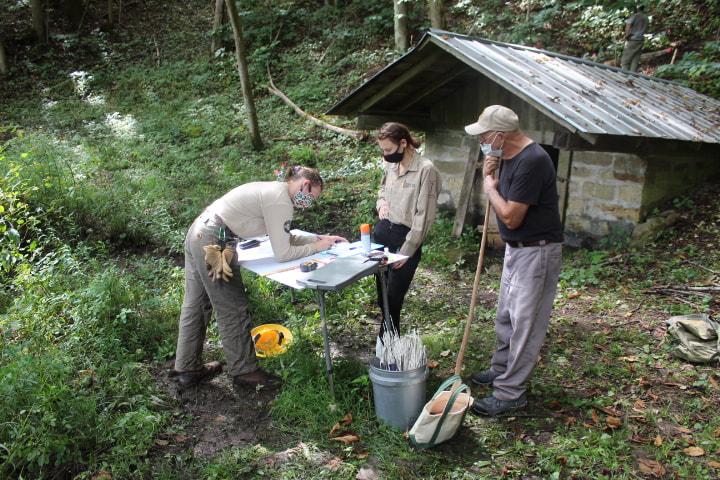
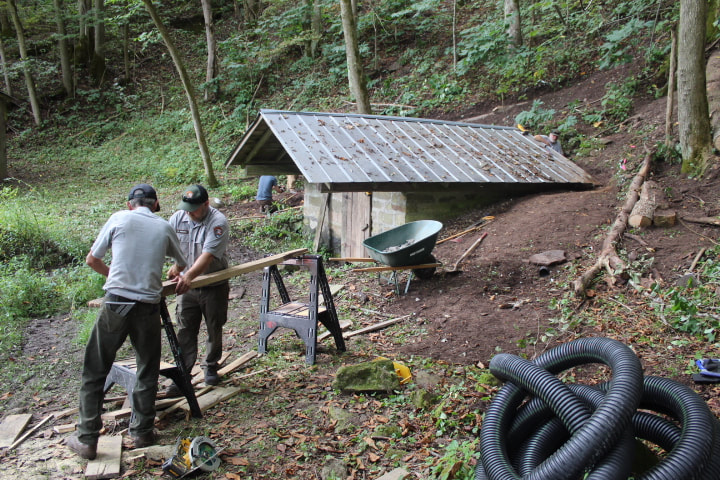
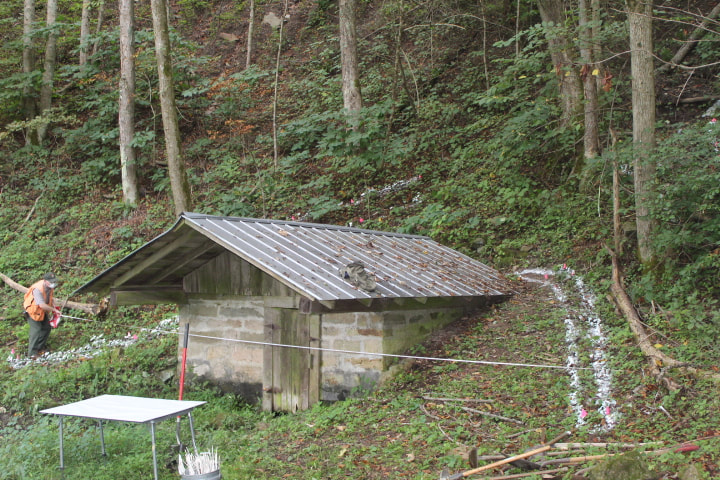
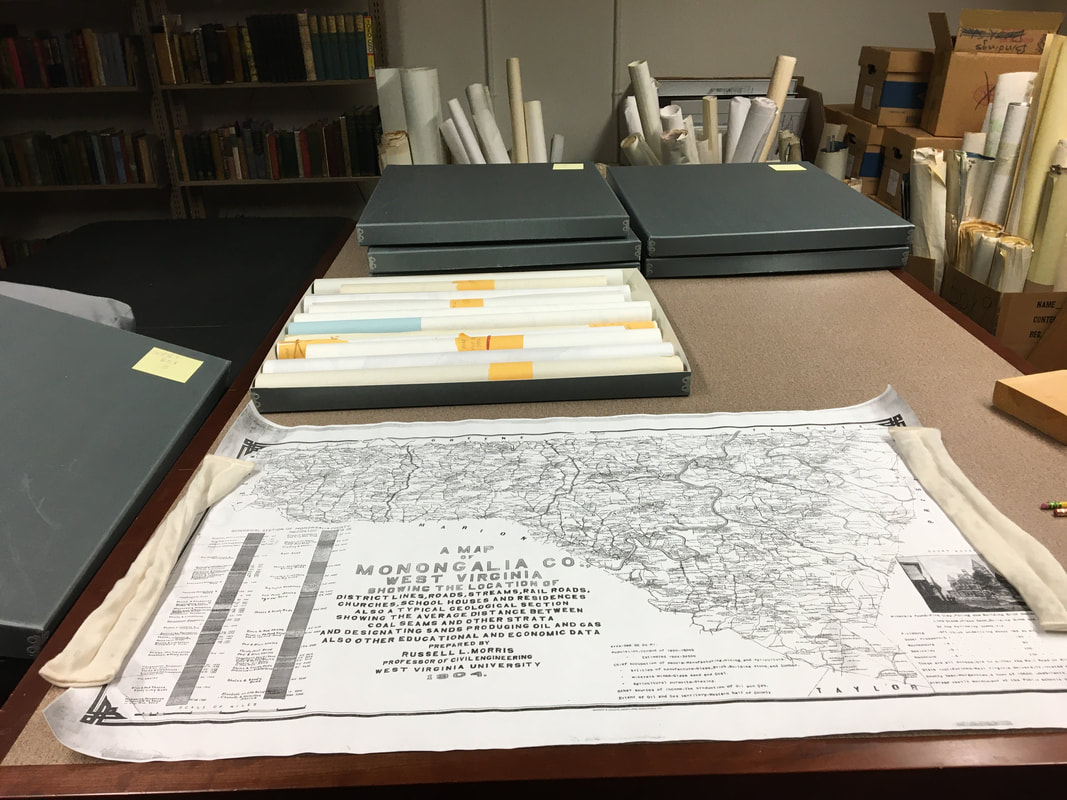
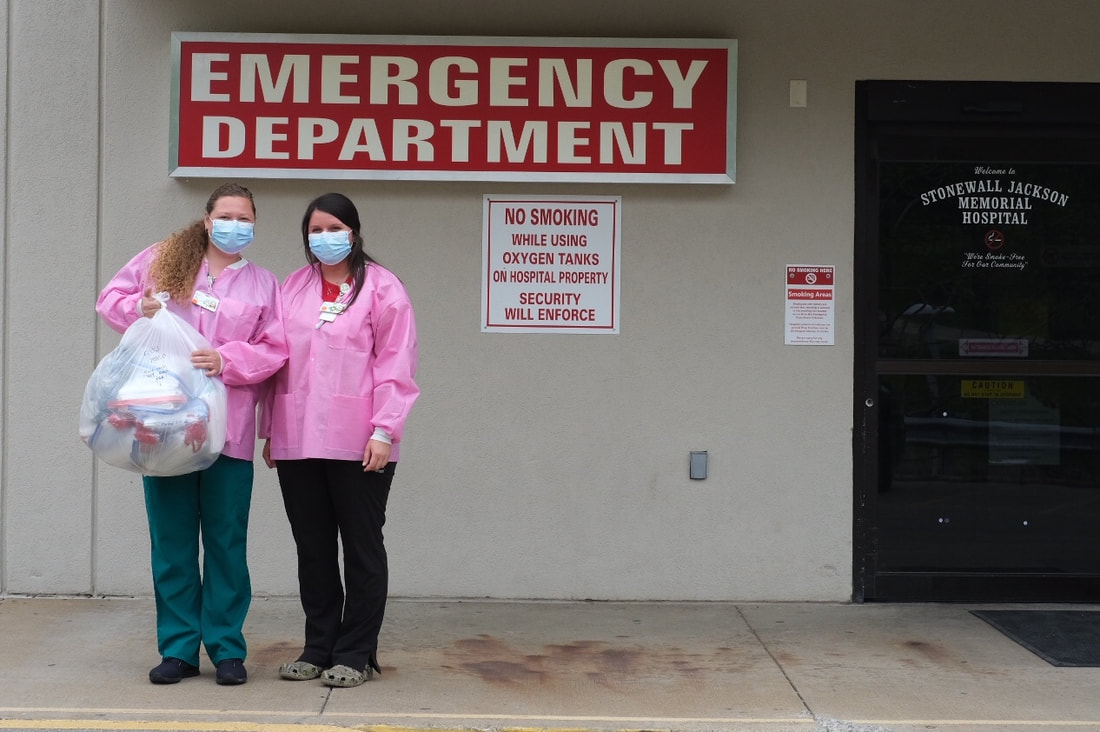
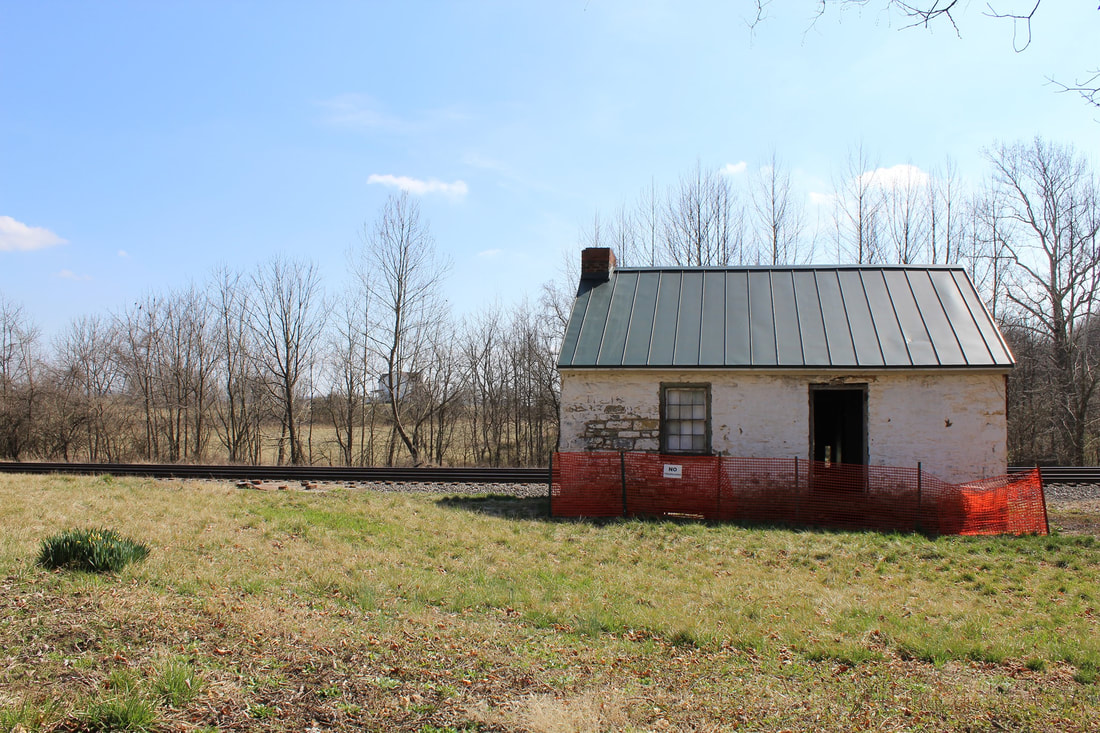
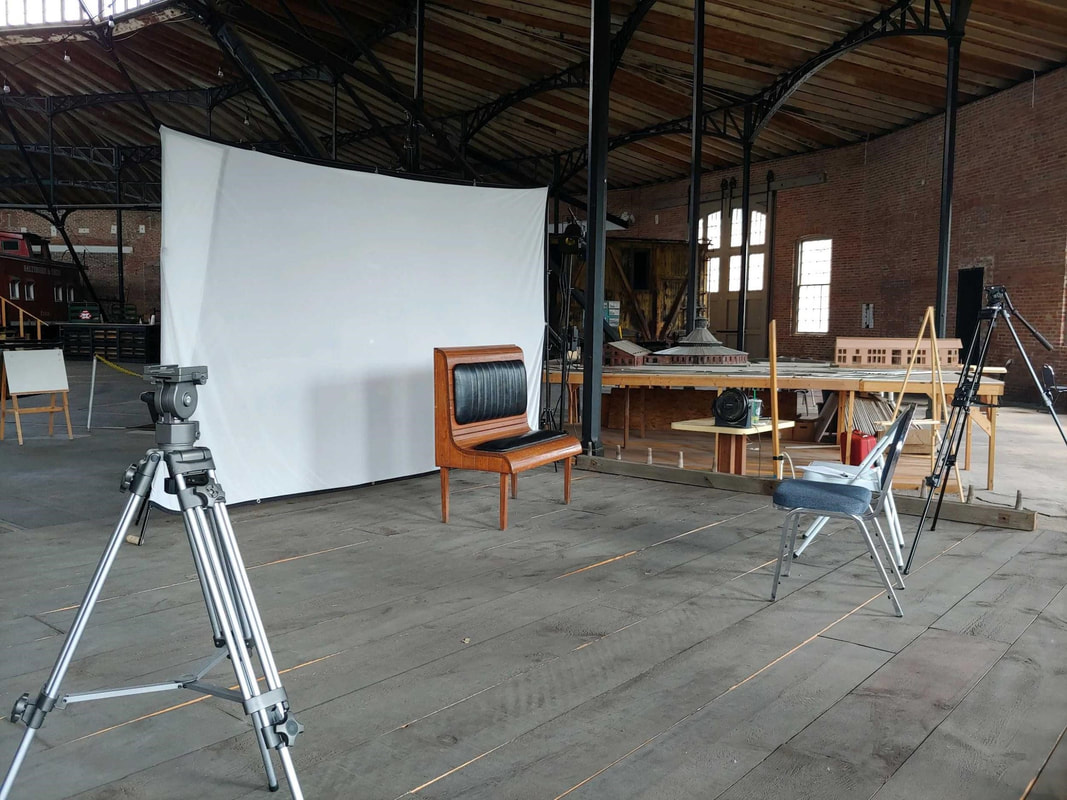
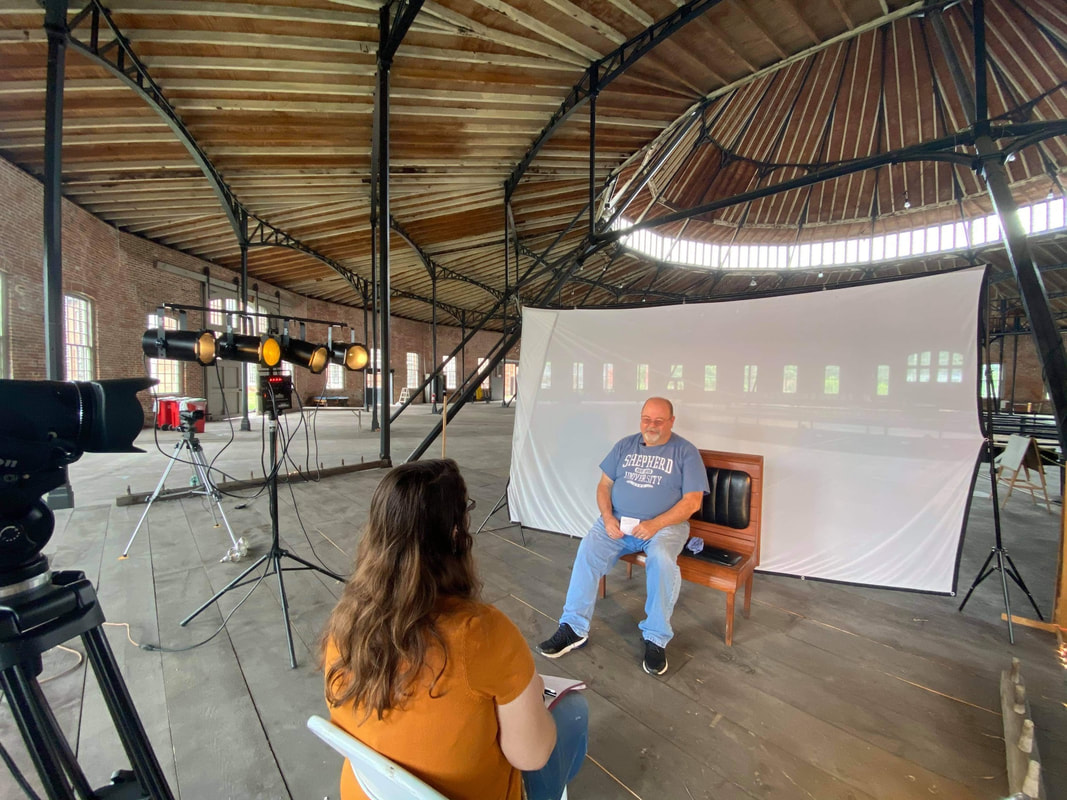
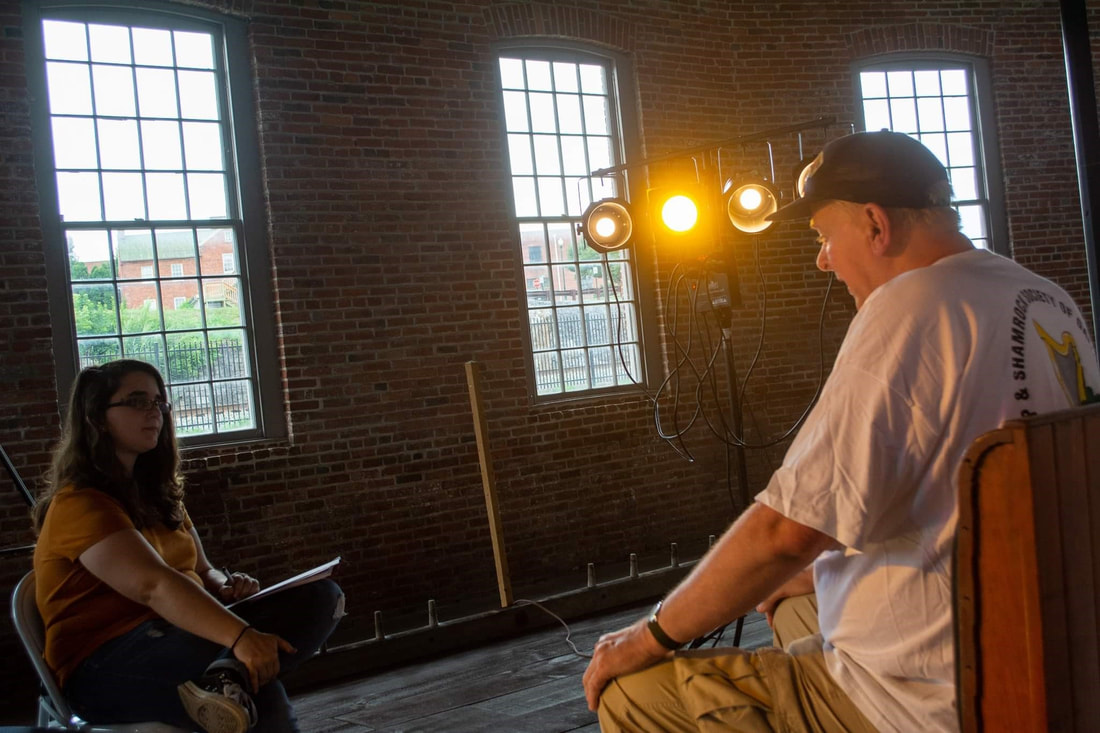
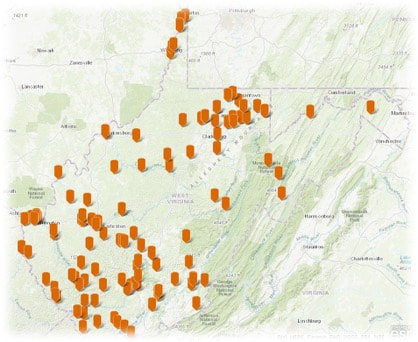

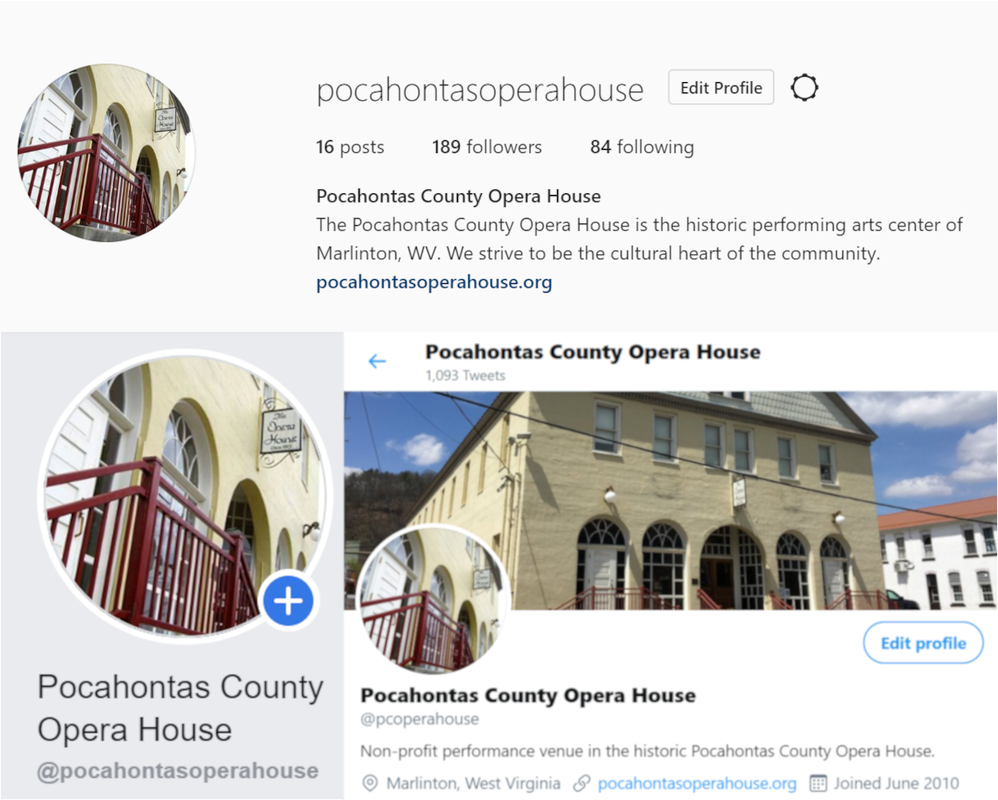
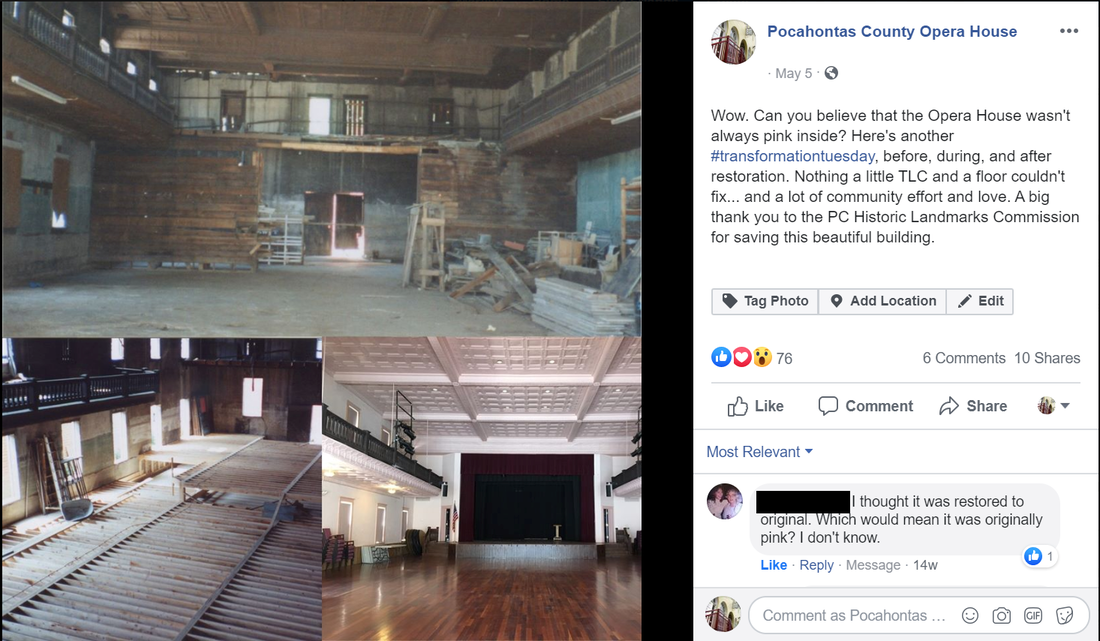
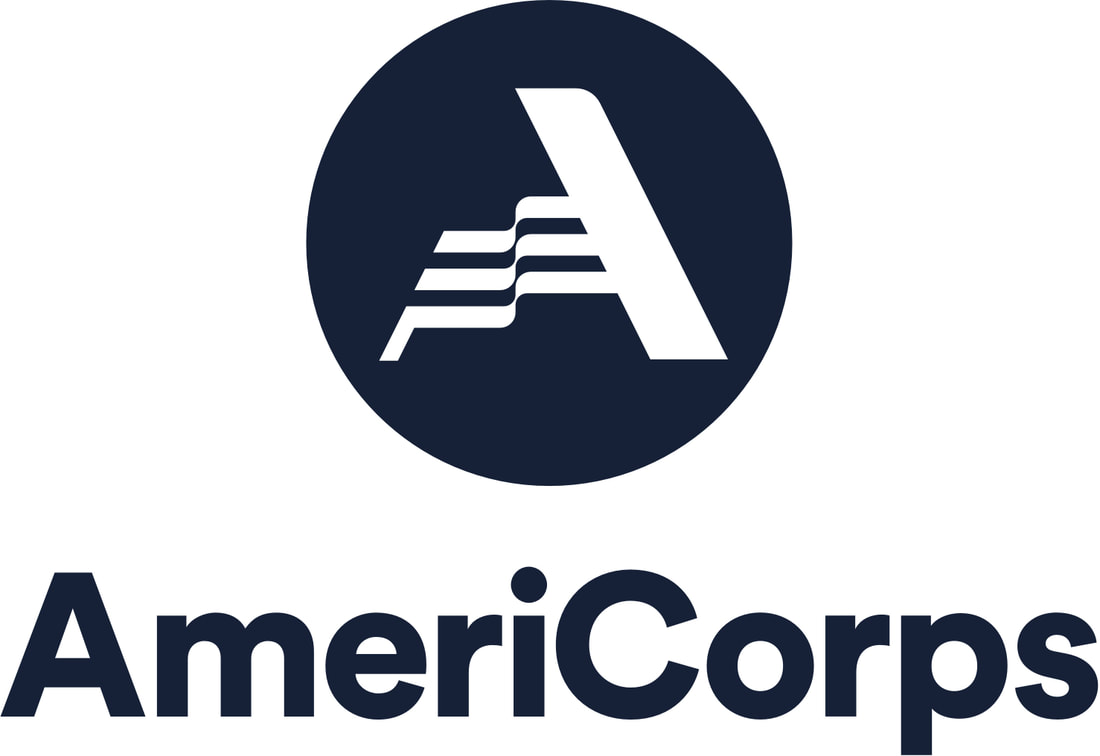
 RSS Feed
RSS Feed

